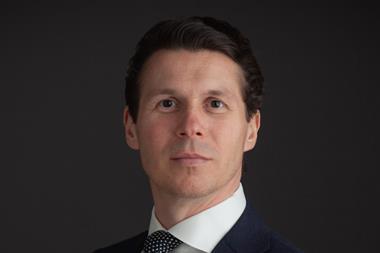Matthew Hirst says that professional indemnity claims have proved the worth of mediation to settle disputes
For the past 10 years professional indemnity has been an area which has been at the forefront of the drive towards alternative dispute resolution (ADR) and in particular, mediation. Indeed it is so accepted as part of the mainstream of dealing with professional indemnity claims that it is now no longer seen as remotely novel, but simply one of the main ways to resolve disputes.
However, a quick glance at current law reports might suggest that professional indemnity trials are still very common and Centre for Effective Dispute Resolution (CEDR) statistics would suggest that the number of professional indemnity mediations is actually falling. What is the true position?
And what lessons can be learned by areas of insurance which have been slow to embrace mediation, for example personal injury?
Many technical courts supported the development of mediation in both professional indemnity and construction claims for over 10 years.
By insisting on the parties informing the court whether they had agreed to a mediation, and if not the reasons why not, parties were under pressure to mediate long before the Woolf reforms.
Changed approach
With the introduction of the Woolf reforms and the work of insurers themselves in developing the professional negligence pre-action protocol, professional indemnity mediation was given further impetus.
The specific requirement of considering ADR pre-action, coupled with widespread adherence to the new protocol, meant that the approach to claims had fundamentally changed. There is little doubt that insurers themselves played a critical role in dragging their panel lawyers towards mediation.
However, as a percentage of the total number of CEDR mediations, professional indemnity mediations have shown a steady decline from 22% in 1998 to 8% in 2004.
In real terms the position is slightly more mixed, but shows there were more CEDR professional indemnity mediations in 1998 than in 2004. The peak years were 1999 (79 mediations) and 2000 (80 mediations).
There were more than seven times the number of professional indemnity mediations than personal injury mediations in 1998, but the number in 2004 was exactly the same.
It is understood that the CEDR statistics for 2005 will show either that the figures have remained constant since 2004, or have decreased further, alongside further growth in personal injury mediations.
A recent survey carried out by the Forum of Insurance Lawyers (Foil) ADR special interest group of the major professional indemnity insurers suggests that no claims directors and managers currently believe that professional indemnity mediation is in decline. However, some believe that a plateau may have been reached. All indicate that ADR is one of their main approaches to resolving disputes.
So how is this explained? First, there has been a dramatic rise in the number of mediation providers and the CEDR statistics do not include the growing number of mediations run by alternative providers.
Second, an increasing number of mediations do not involve a provider, but parties going direct to a mediator instead. Third, mediation has now been adopted to a greater or lesser extent in a number of other areas of dispute, which would reduce the importance of professional indemnity mediations as a percentage of the total.
However, notwithstanding those factors, if the number of professional indemnity mediations was continuing to grow significantly, then one would still expect to see a steady increase in the number of CEDR professional indemnity mediations.
One explanation for the apparent plateau is the considerable success of the pre-action protocol in prompting parties to negotiate pre-action, including traditional negotiation not involving a third party.
Faced with spiralling litigation costs in the mid 1990s, professional indemnity insurers were quick to embrace mediation as a genuine alternative to litigation.
Genuine discussion
Ten years later, not only are there more alternatives but there is the possibility of genuine discussion/negotiation in most disputes pre-litigation.
Nick Colman, partner in the firm of Reynolds Colman Bradley, is typical of respondents to the survey when he suggests that the concerns about the consequences of not agreeing to a mediation can have an impact on parties' approaches to negotiation.
Even if a mediation does not take place "....the adverse consequences of unreasonably refusing to mediate have become in themselves strategic tools in the resolution process".
Having had 10 years intensive experience of mediation, what are the lessons which professional indemnity insurers can offer? Most see the identity of the mediator as critical, recognising that whereas the mediation process offers a platform, it is the individual skills of the mediator that are paramount.
Experienced professional indemnity insurers will specify the individual mediator they want, rather than relying on the provider to recommend someone. They will focus on the mediator's experience and reputation as a mediator, rather than looking for expertise in the subject matter of the dispute.
Most of the respondents to the survey believe that time-limited mediation can be particularly effective. Peter May, claims manager at Charrington, is typical of respondents, highlighting the fact that the skills demanded of the mediator in a time-limited case can be very different to traditional mediation.
"Most mediators require a lot of training to learn the skills necessary to conduct time-limited mediations and make them work,"he says.
Most respondents believed that the introduction of definite finishing times would also assist. David Siddle, of AG Dore & Ors, Syndicate 2526, indicates that this would "cut the amount of posturing which goes on".
Another respondent, Stuart Clarke, professional indemnity claims manager at Hiscox, indicates that he also supports and tries where appropriate to encourage time-limited mediations.
But he went on to say: "Resolution is the aim and you simply have to accept with some claimants and co-defendants that they want their say, so you have to be happy to let mediations run on if that's what it takes to get a result."
Overvalued session
Many respondents also believe that mediators are frequently reluctant to change the order of mediations. May indicates that mediators "feel the need to follow what has become the traditional structure".
A number of senior claims managers believe that the opening session in which each party is given the opportunity to present their case is overvalued and takes up valuable time. "In my experience the opening session is of limited value and often can be done away with completely," says May.
There is also criticism of mediators allowing so many mediations to run beyond a normal working day, Siddle states: "I don't see why a two-party dispute involving clearly defined issues should drag on until 10pm in the evening."
There is recognition that it is now rare for a claimant solicitor to refuse to mediate, even if their agreement to mediate is not always immediate. Costs concerns are recognised as being a key factor. Respondent Nick Colman suggests that "claimant solicitors are no longer misunderstanding the process of mediation".
Postpone mediations
Generally, respondents showed few concerns about insurance panel lawyers' approach to mediation, though some still feel that there is a tendency for lawyers to postpone mediations to allow for further investigative work, which frequently does not have an impact on the mediation.
"Lawyers are often too cautious in setting up a mediation early enough to save costs," says May.
This is an interesting point. Frequently when lawyers have little or no experience of mediation (as can be seen in the development of personal injury mediation) there is a real tendency to delay mediation to a relatively late stage in the litigation, after all evidence has been obtained.
After 10 years or so of intense experience of mediation, clearly a number of professional indemnity claims managers believe that there are still remnants of that trait.
The proposed 41st CPR update (in force from 6 April 2006) brings a number of changes to most of the pre-action protocols and removes a number of anomalies. The requirement to consider ADR is now more certain. Though, unfortunately, the definition of ADR is too wide.
And the requirement that a costs judge must consider failure to adhere to the protocol including the ADR requirements means that it is more likely that the threat of costs consequences could become more of a reality.
However, the changes are likely to have a greater impact on other types of dispute: for example personal injury claims, where the relevant pre-action protocol had previously not had any requirement to consider ADR prior to the recent changes.
While more specific costs consequences for unreasonable refusal to agree to ADR would be welcomed, it does not appear there is any wish in the market for there to be compulsory mediation.
The evidence suggests that professional indemnity mediations are not in decline, but that currently there is no drive to increase significantly the number of such mediations.
However, there is no doubt about the huge impact that mediation has had on professional indemnity disputes in the last 10 years. It is no longer seen as an alternative, nor remotely controversial. Today it is simply one of the main ways to resolve disputes.
Having been at the forefront of the development of mediation in the UK, the professional indemnity market is likely to be a key player in refining the process to make it more effective.
For more fledgling areas of mediation, such as personal injury, there are a number of lessons to be learned, particularly as to the long-term success of mediation: the appointment of mediators; the role of insurers in convincing their panel lawyers; and the critical role of the courts in supporting the process. IT
' Matthew Hirst is chair of the Forum of Insurance Lawyers mediation/ADR special interest group and Partner at DLA Piper Rudnick Gray Cary UK
Hosted by comedian and actor Tom Allen, 34 Gold, 23 Silver and 22 Bronze awards were handed out across an amazing 34 categories recognising brilliance and innovation right across the breadth of UK general insurance.













































